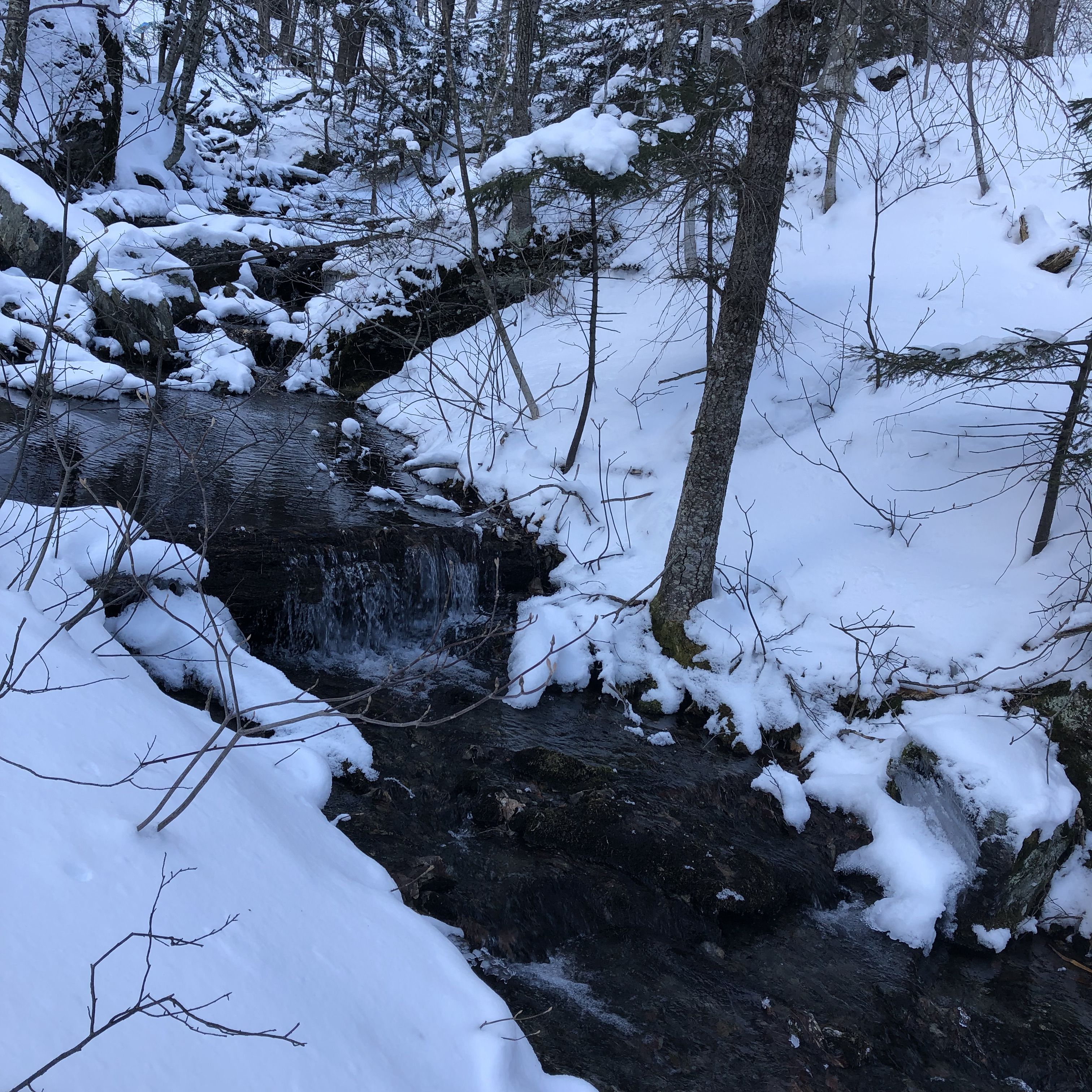Charitable Giving Advances Watershed Protection and Flood Resilience
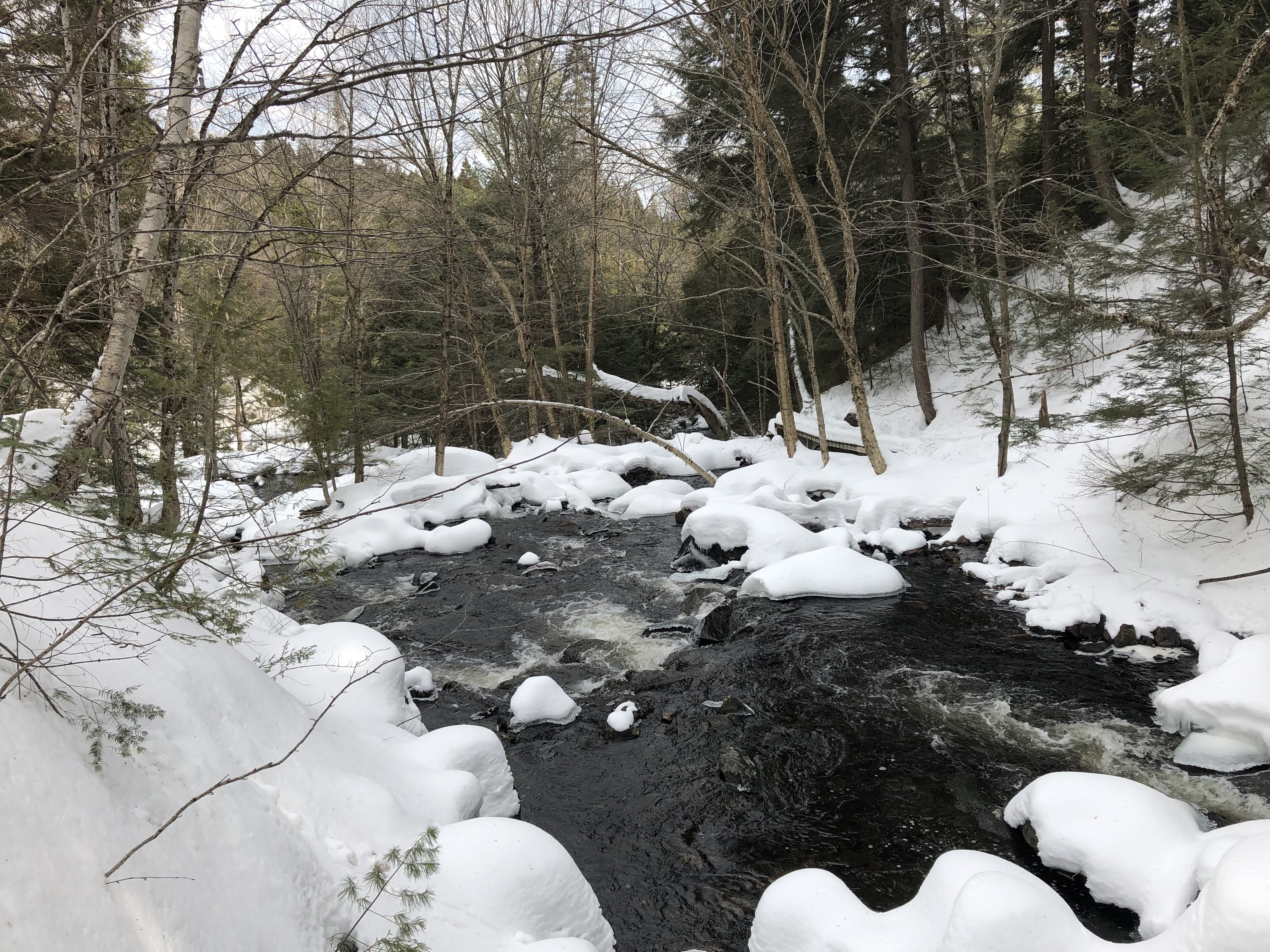
The destructive flooding in Vermont last summer left many questions, with one at the top of the list: How can the state best protect itself from similar weather events that are likely to happen even more often in an era of climate change?
The effort to build flood resilience is complex and costly but not impossible. It's encouraging to know that some of Vermont's nonprofit organizations are doing vital work to lead the state toward solutions. And that more than a dozen of these nonprofits have received grants for water resilience work from the VT Flood Response & Recovery Fund 2023 at the Vermont Community Foundation.
The work they are doing ranges from providing assistance and expert advice on structural changes, such as removing old dams that aggravate flood risk, to helping property owners and municipal governments wade through the multi-year process of home buyouts that can turn flood-prone properties into public green space.
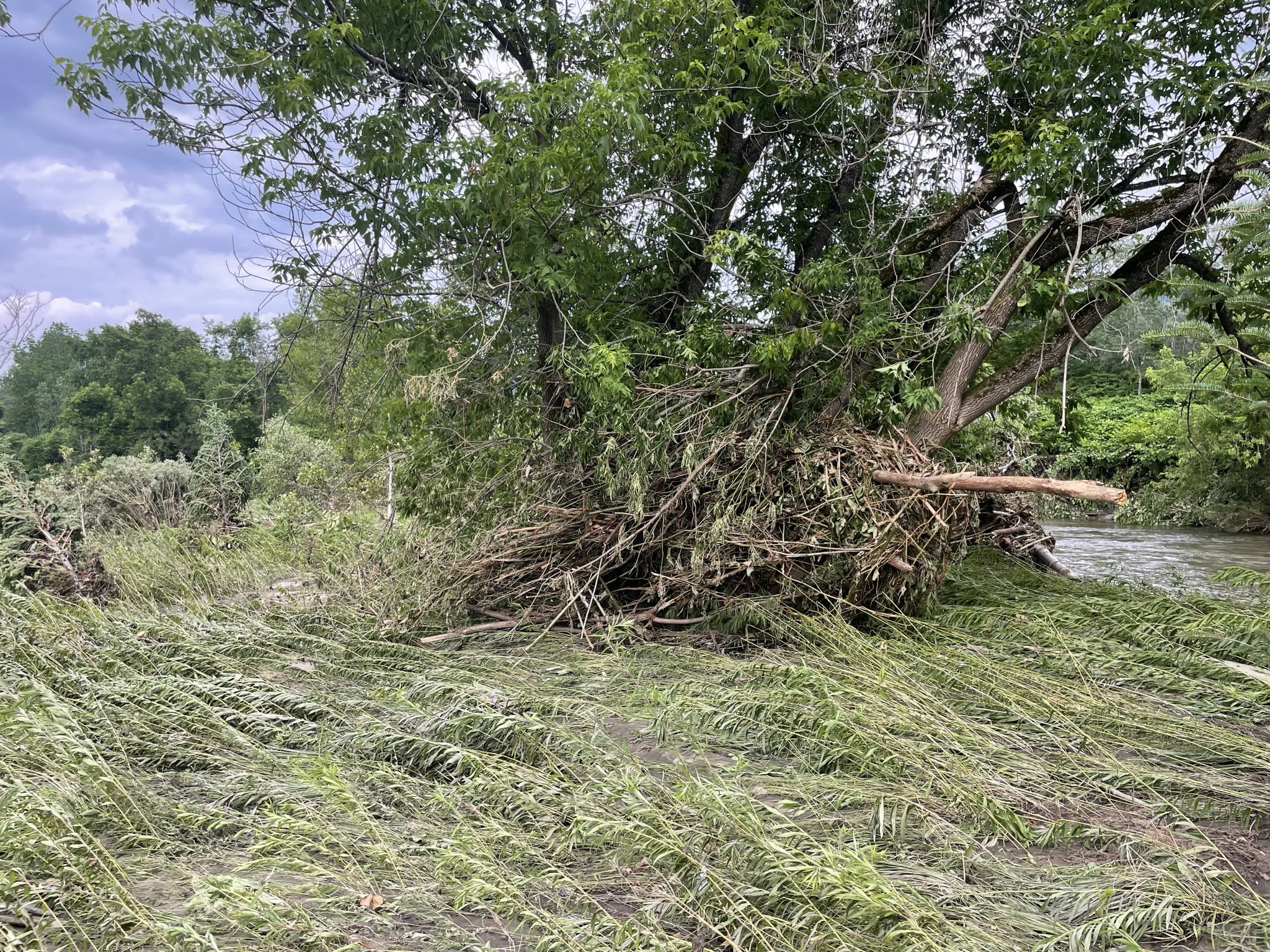
Nonprofits are also working with scientists to advance research on building flood resilience in watersheds upstream from population centers and advocating for statewide land use changes that keep new construction away from flood-prone areas.
Other work includes leading river clean-up efforts and planting trees along banks to reduce erosion. Just as important, the nonprofits serve a key role in offering advice.
"One of the biggest needs after a flood is just being responsive," said Mary Russ, executive director of the White River Partnership (WRP), a nonprofit based in Royalton Village. "People have questions, they don’t know what to do."
Support from the VT Flood Response & Recovery Fund allowed the WRP to drop other work and immediately focus on helping with immediate clean-up and answers. "We were able to be present and be responsive,’’ Russ said.
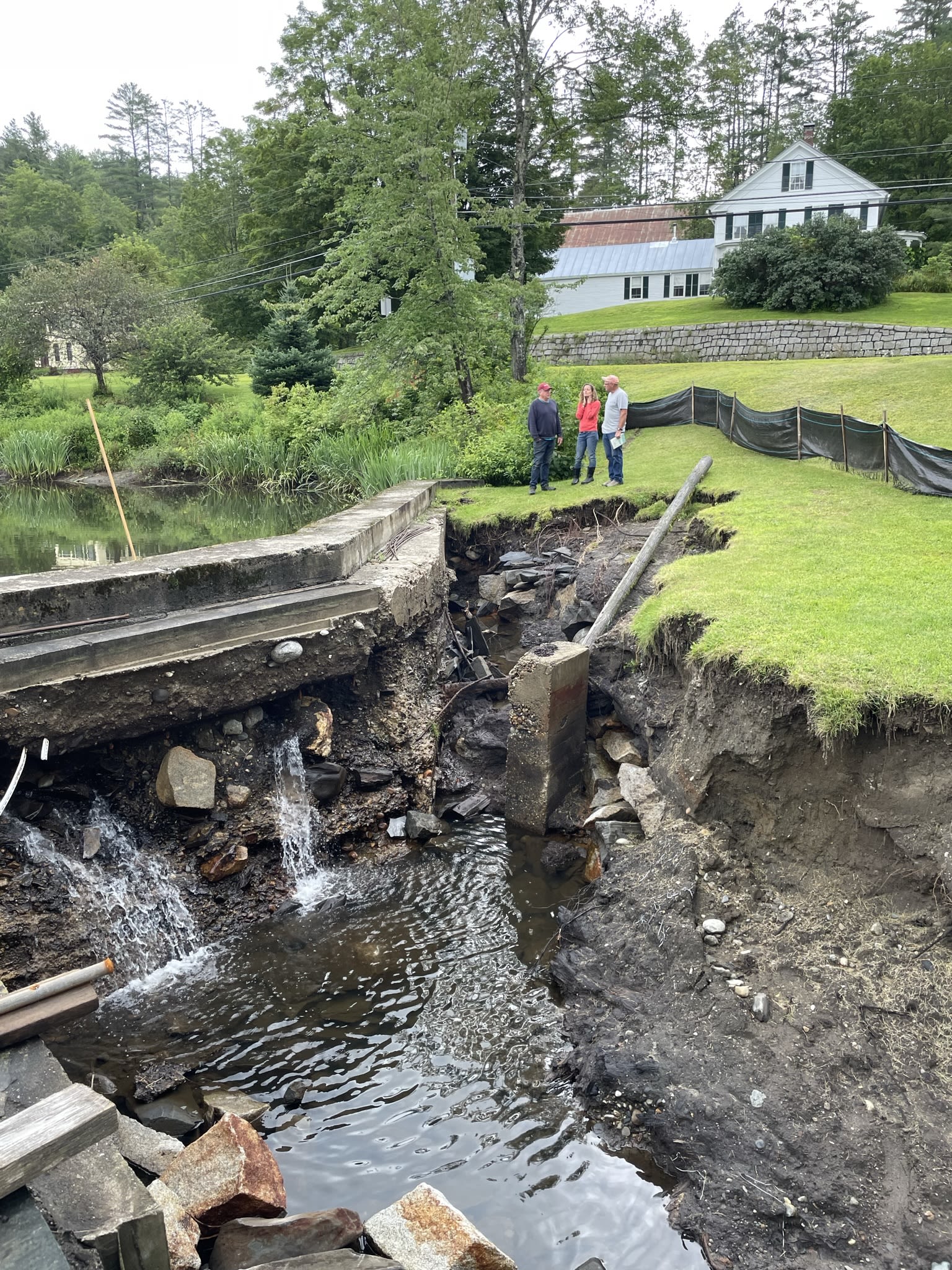
The phone has also been ringing at the Friends of the Winooski River in Montpelier with questions about failing dams, the FEMA buyout process, stream bank collapse, and more.
“After the flood we received calls from municipalities and land owners asking for help with a variety of different concerns, " said Michele Braun, executive director of the nonprofit, which has also been supported by the VT Flood Fund.
The calls continue and Friends of the Winooski River is involved with extensive flood recovery and resilience work in the hard-hit region, including working with property owners and local and state government on removing old dams. The effort to find funding, complete permitting, and oversee such work is often a multi-year project.
Many of Vermont's old dams were originally built so that water power could turn machinery. But now a good number are idled and at risk of collapsing and bringing a wall of sediment and water downstream. “There are hundreds of dams in the watershed that don’t serve a purpose and we have been targeting those for removal," Braun said.
The July 2023 flooding underscored the importance of this work when at least five dams in the Winooski watershed failed to varying degrees. The Friends is now ramping up efforts to work with partners to make progress on dam removals that lower stream elevation, reduce flood risk, and improve water quality for fish, turtles, and birds. "There are lots of benefits," Braun said.
The Friends is also helping provide advice and expertise on home buyouts, including sharing the lessons from Tropical Storm Irene in 2011. After that disastrous flood event, the town of Northfield eventually saw the buyout of 18 homes with assistance from FEMA and other sources.
The homes were cleared and the area was turned into Dog River Park, a public green space that also serves as a floodplain safety valve during high-water events like the summer of 2023 floods. Water covered the park but damage to homes in the town of Northfield was less extensive than during Tropical Storm Irene. Now, as Barre, Berlin, Montpelier, and other communities navigate potential home buyouts, the Friends has experience to help guide the discussion.
Buyouts reduce danger to families and save money by putting an end to what can be a chronic cycle of repairs and repeated flooding. And while it's difficult to see homes removed during a statewide housing crisis, particularly when low-income housing is often located in floodplains, the answer is not to put vulnerable populations in dangerous locations, Braun said.
Towns also worry about the loss of property tax revenue with buyouts, but that cost can be addressed with new home construction in better locations. Towns also save when they aren't repeatedly fixing streets, water lines, and other infrastructure in floodplains.
“In Northfield after Irene, there were some folks who were concerned about the impact on the grand list but that is a very short-term impact and if you don’t remove the homes from the floodplain you are going to keep having them destroyed by flooding and that’s a much greater impact," Braun said.
Over the long-term, better planning is also important, including advocating for statewide river corridor protections that reduce risky building practices, she added.
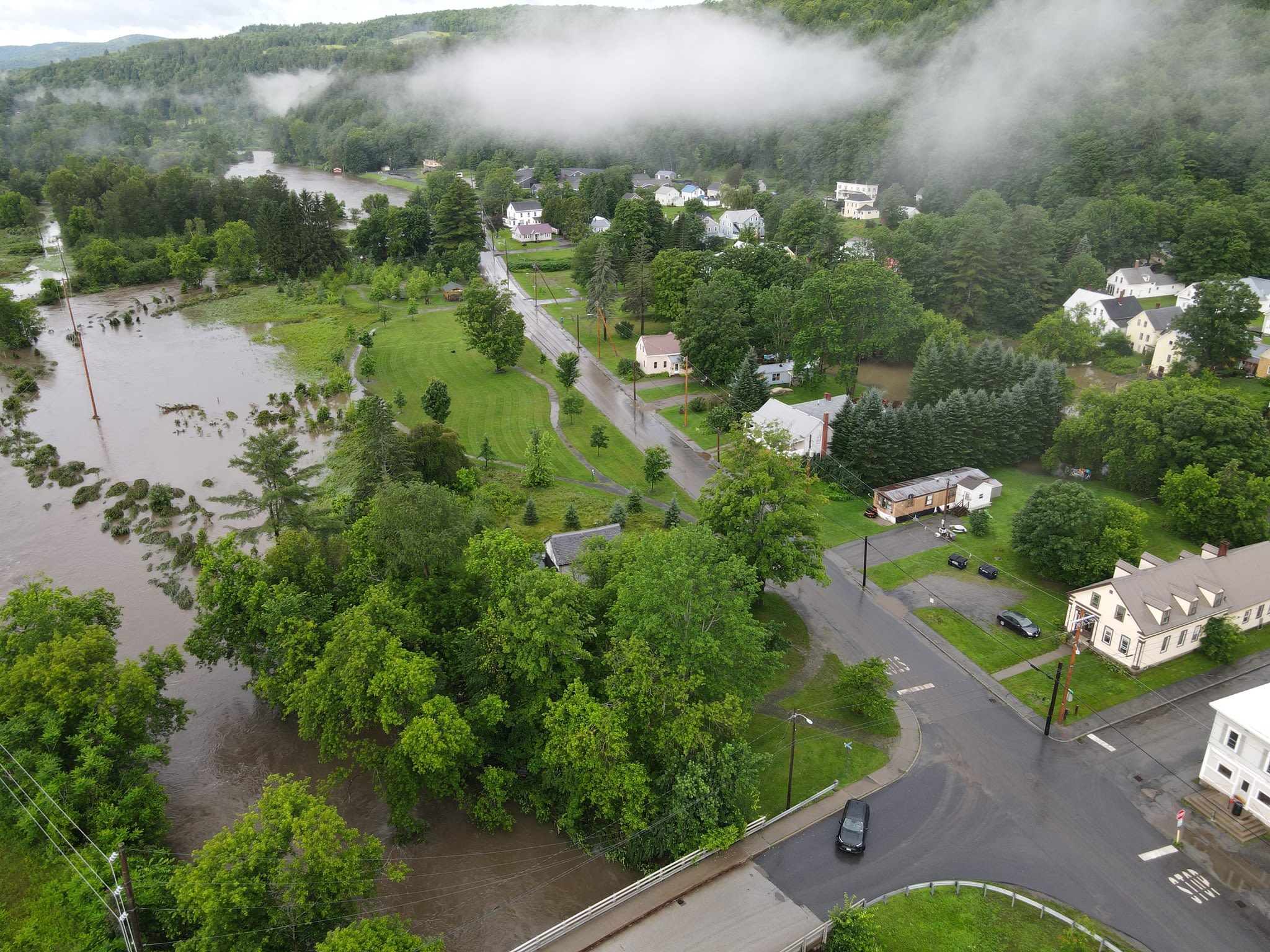

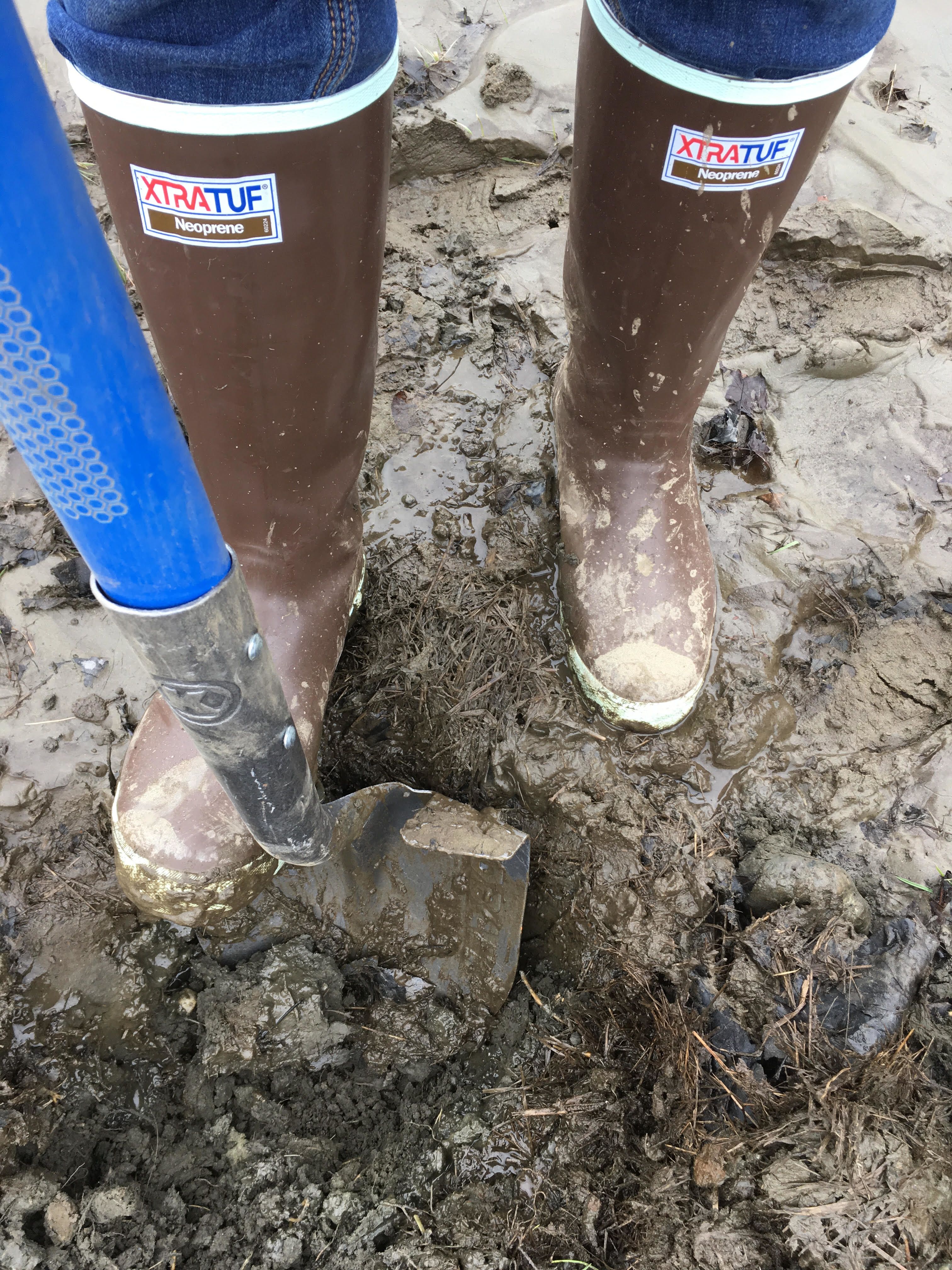
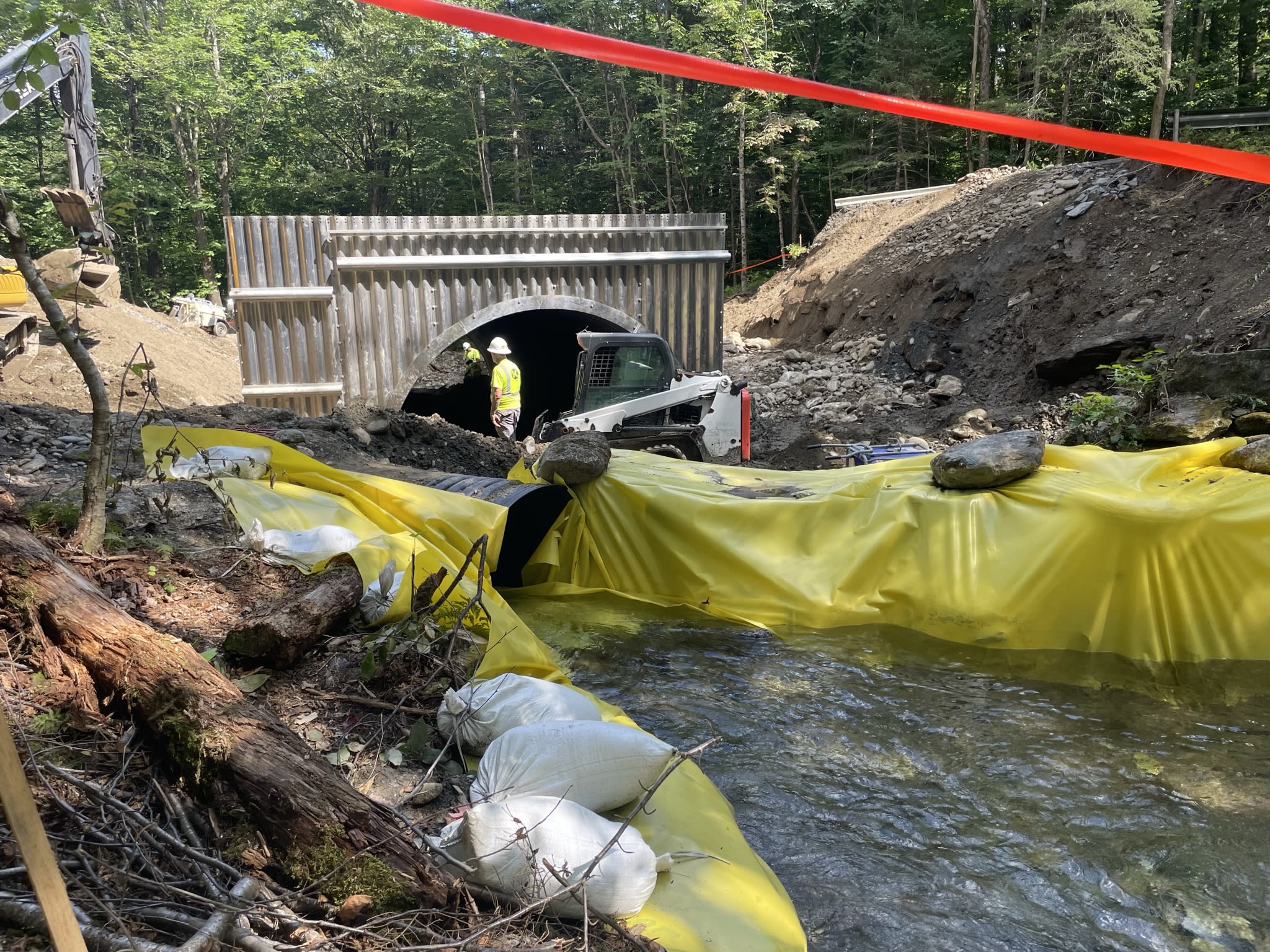

The White River Partnership is providing various types of assistance, although the July 2023 floods were not as damaging to the watershed as the flooding after Tropical Storm Irene. After Irene, WRP helped towns in the region oversee approximately 40 home buyouts. Most of the lots were converted to public green space, including a series of new river access points for the public. Some of the new green spaces were flooded last July, but as in Northfield, the water did not cause nearly as much damage as Irene because there were no houses. The water pooled but eventually receded without disastrous impact.
Buyouts are not always the answer, and funding for them is limited, but nonprofits can help lead property owners and communities through what is sometimes the best option. "It's not an easy decision to walk away from your property," Russ said. "But it’s a tool in the toolbox and it can be used effectively in many places if the opportunity presents itself."
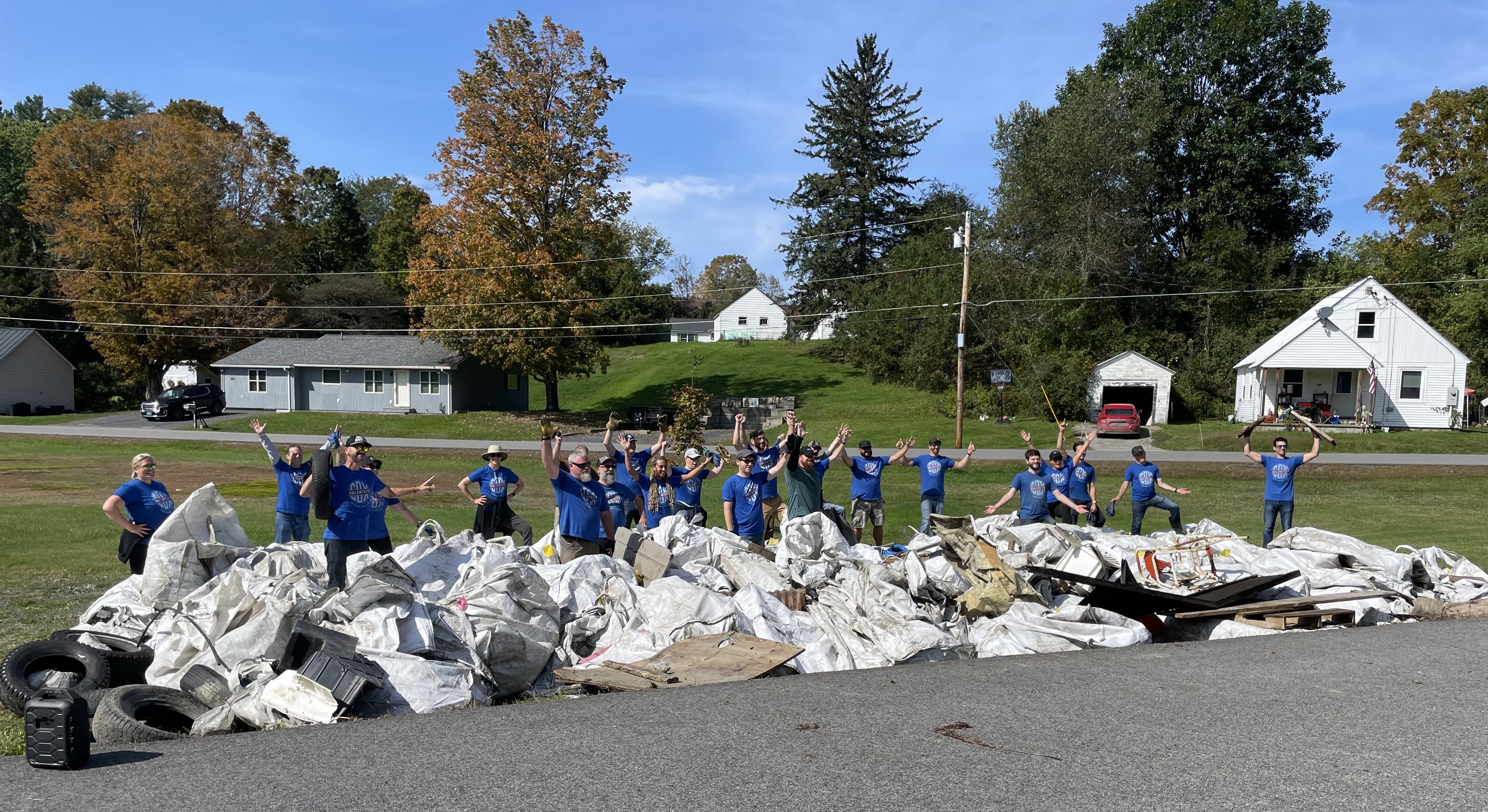
The flooding last year pushed mountains of debris and trash into Vermont waterways. Volunteers working with the Friends of the Winooski collected large amounts, including hundreds of plastic totes and burlap bags that were dislodged after the floodwaters ran through a hemp processing warehouse in Plainfield. "They were stuck everywhere," Braun said.
The White River Partnership also led volunteer crews that cleaned up tires, roofing, siding, smashed farm equipment, and more. "There was a lot of muck everywhere and a lot of trash and debris," Russ said. The job isn't done and volunteers will continue to pull trash out this year and beyond, she added. "The White River is a recreational destination and we want to keep it clean and safe."
Other nonprofits supported by the Flood Fund for their watershed work include Winooski Valley Park District, Intervale Center, Vermont River Conservancy, and the Black River Action Team.
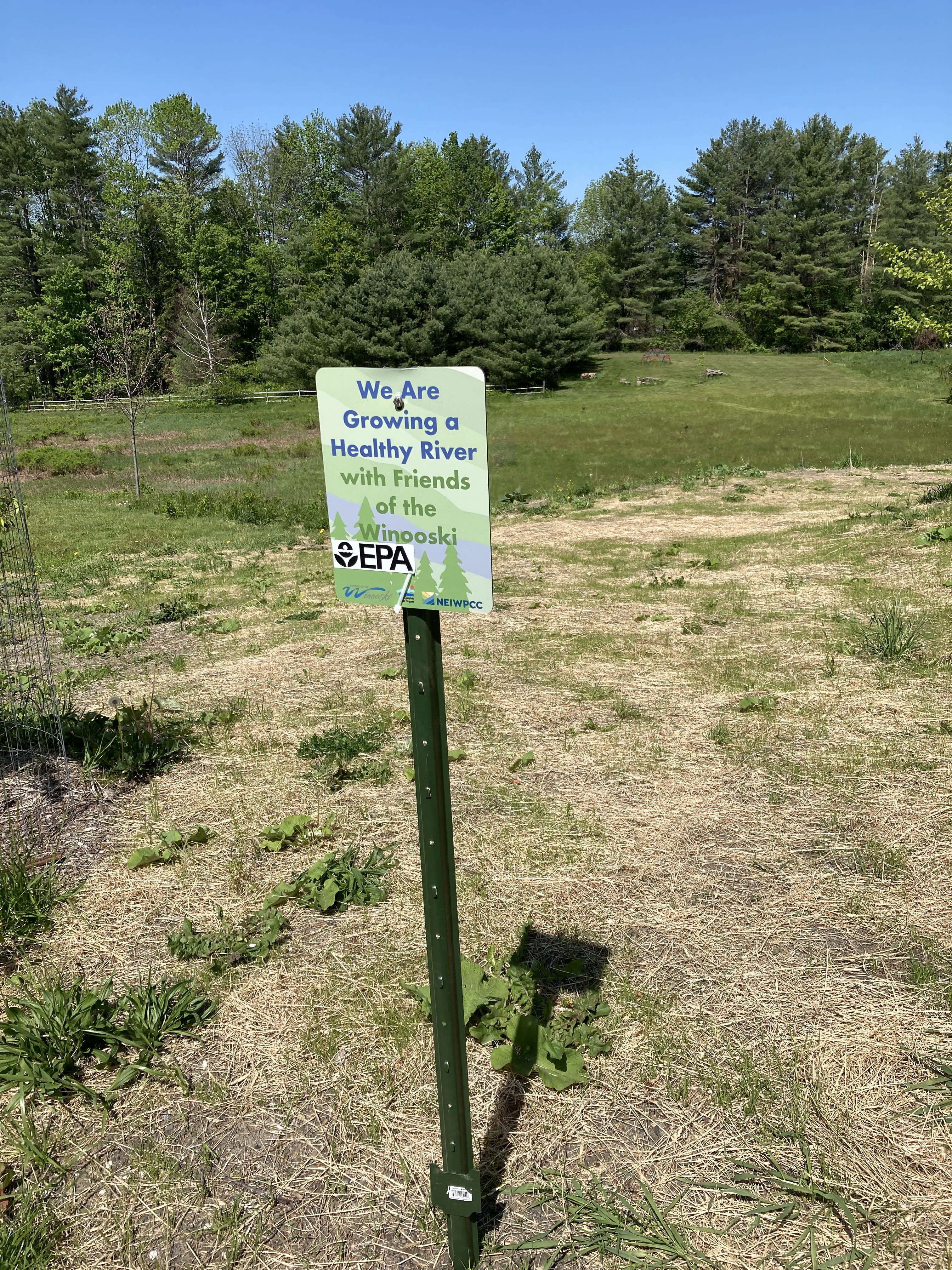
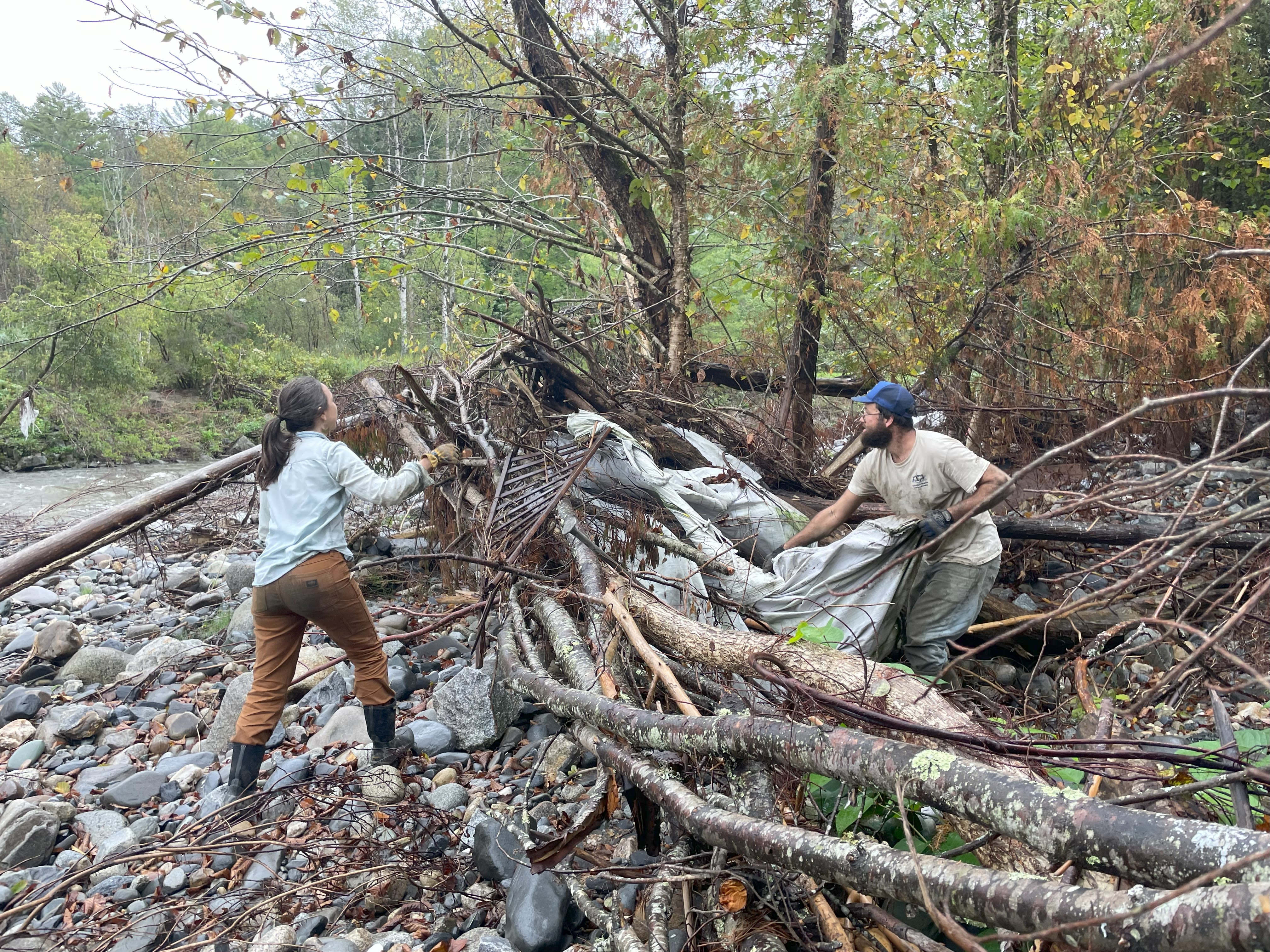
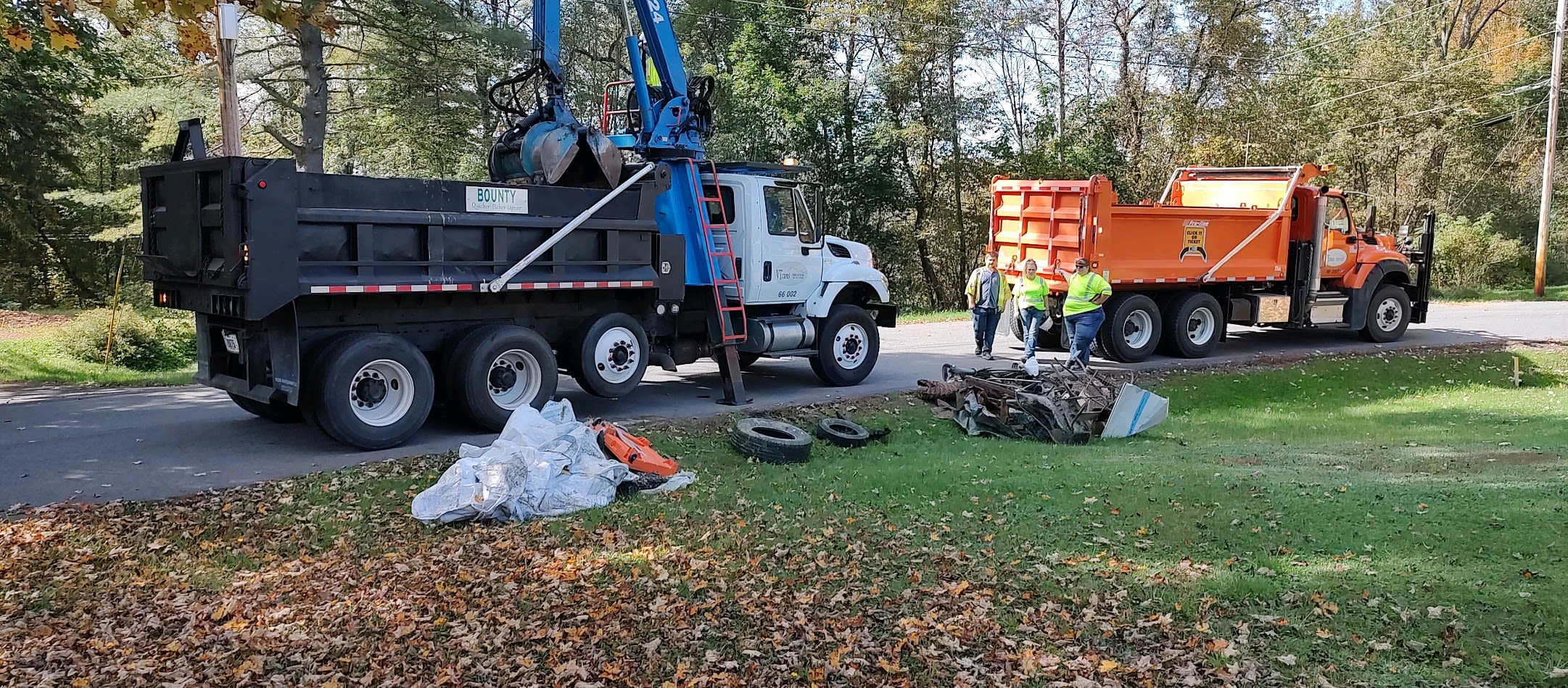



Learn more at vtfloodresponse.org
Photos by Vermont Community Foundation and courtesy Friends of the Winooski River
